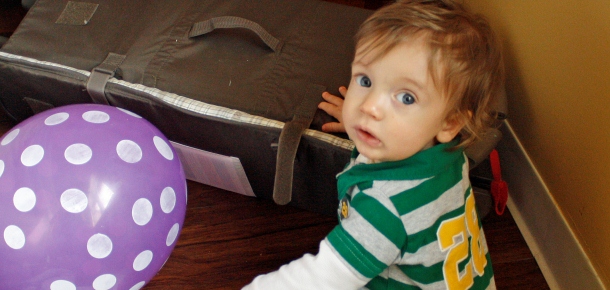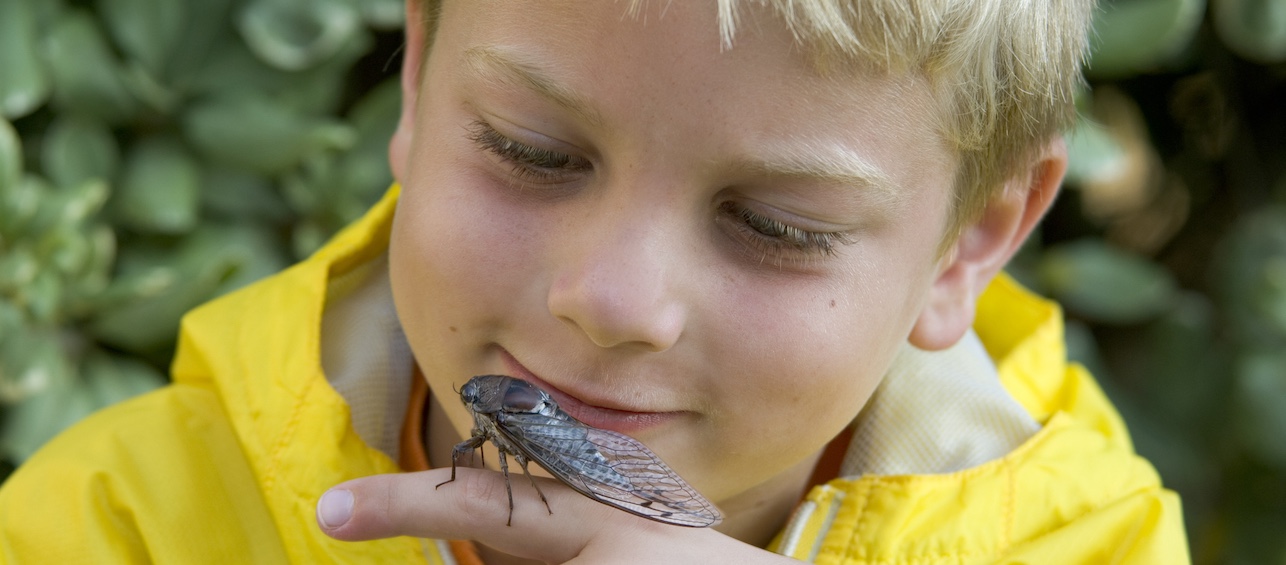To look into Jameson Golliday’s bright blue eyes or watch him dart around a room scattered with toys, one would never guess the one-year-old is part of a gene therapy clinical trial for the immune disease popularly known as “Bubble Boy Syndrome.”
Last summer, Jameson was the first patient treated at Cincinnati Children’s with a redesigned gene therapy for the ailment officially referred as X-SCID (X-linked severe combined immunodeficiency).
Caused by a gene mutation in blood cells, X-SCID cripples the immune system. It usually strikes at boys shortly after birth. With their bodies unable to defend against germs, the children die from infections. In gene therapy, a correct gene is inserted into patient cells to fix the problem.
Just before Thanksgiving, and shortly after his first birthday, Jameson was able to go home. All indications are that Jameson is healthy and his immune system is working, according to his physician, Lisa Filipovich, MD, director of the Immune Deficiency and Histiocytosis Program at Cincinnati Children’s.
But the story behind the development of gene therapy for X-SCID has been quite the saga. The disease initially got the name “Bubble Boy Syndrome” because some patients had to be confined to highly-controlled, sterile environments to protect them from germs and infection.
Back in 2001, an international research team thought it had the answer for X-SCID – testing a bold new approach called gene therapy to correct the gene mutation in blood cells that causes the disease. Unfortunately, with earlier technologies available at that time to develop the therapy, it also triggered leukemia in five patients in Europe and the clinical trial had to be stopped.
That sent scientists back to the lab for new answers. Researchers at the Cincinnati Children’s Cancer and Blood Diseases Institute helped lead that effort, in particular the medical center’s Vector Production Facility.
Cincinnati Children’s helped develop a more precise and safer method for gene correction in X-SCID, fine tuning the engineered virus (known as a vector) that delivers a functioning copy of the defective gene to immune system stem cells. The new vector, which was manufactured at Cincinnati Children’s, is being used in a new international clinical trial now underway in the US and Europe.
The gene therapy for X-SCID involves removing some of the patient’s own blood stem cells and taking them to the laboratory for processing. Vector particles containing the correct gene are introduced to the cells, where the vectors’ viral properties allow it to efficiently enter the cells, and deliver its therapeutic cargo. Gene-corrected blood stem cells are then given back to the patient to reprogram the immune system.
You can learn more about Jameson’s battle against X-SCID in Research Horizons, the medical center’s research magazine.
X-SCID is one of several disorders under the classification of Primary Immunodeficiency. Next week, April 22 – 29 is World Primary Immunodeficiency Week 2013. Patients, parents and medical professionals around the world – including a team at Cincinnati Children’s – are working to increase awareness about the disease to help ensure that people get the appropriate medical referrals and treatment they need. Learn more about these efforts to raise awareness – https://worldpiweek.org/.







Jameson is my grandson and my inspiration. The staff at this hospital are my heros and will I will forever be grateful for what they have done. Your awe-inspiring research and dedication to finding a cure for this life ending disease has given my beautiful grandson, his parents and brother Shawn a chance at life.
Nick thank you for writing such a wonderful article and helping to spread the word about these heros and the remarkable research they have done
God bless you all. Because of all you do, a little boy and his parents wake up every day smiling
Wayne Golliday (grandpa Wayne)